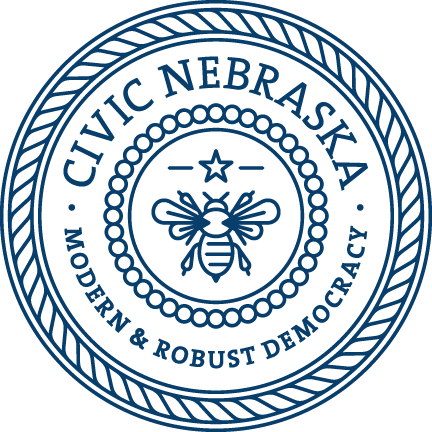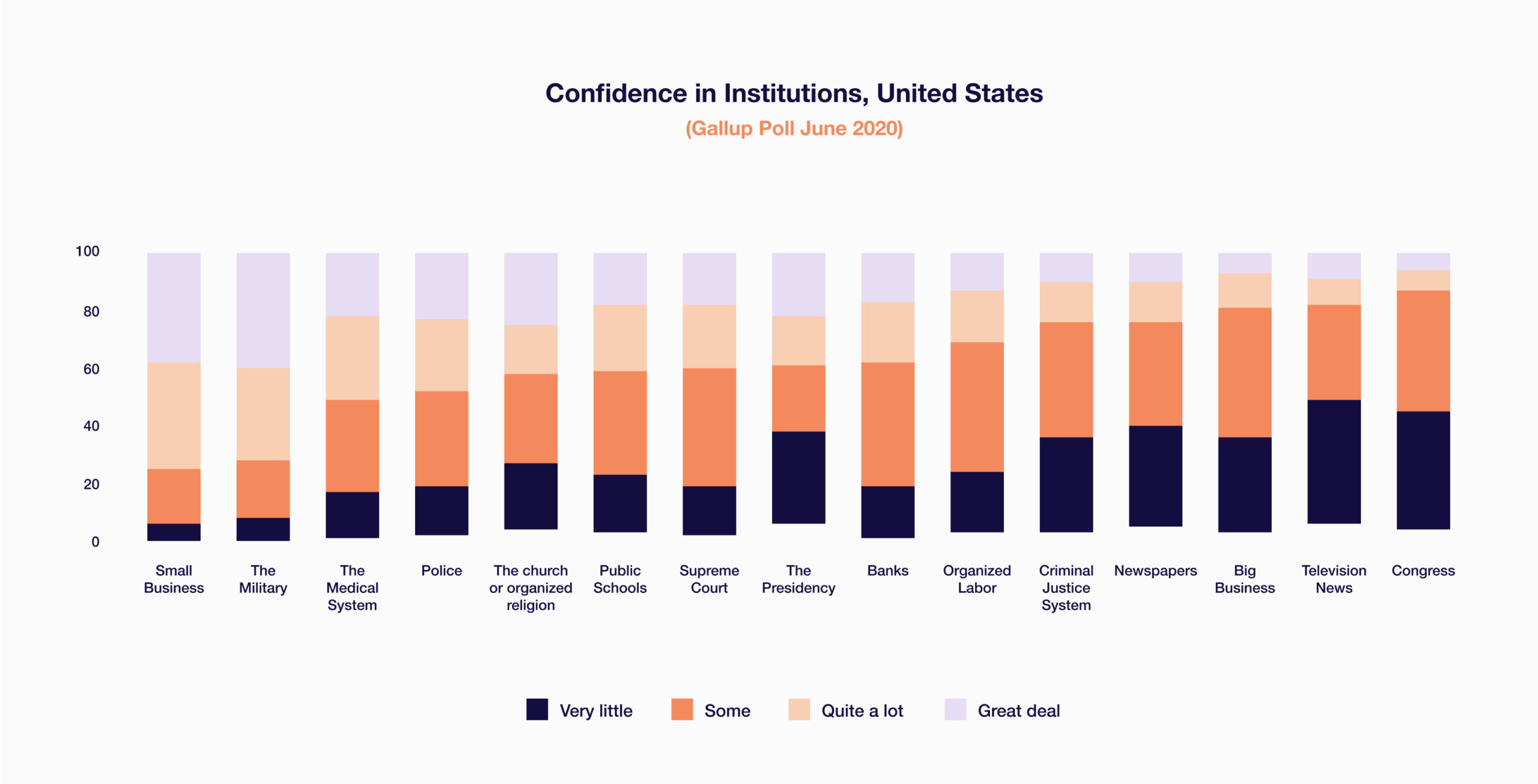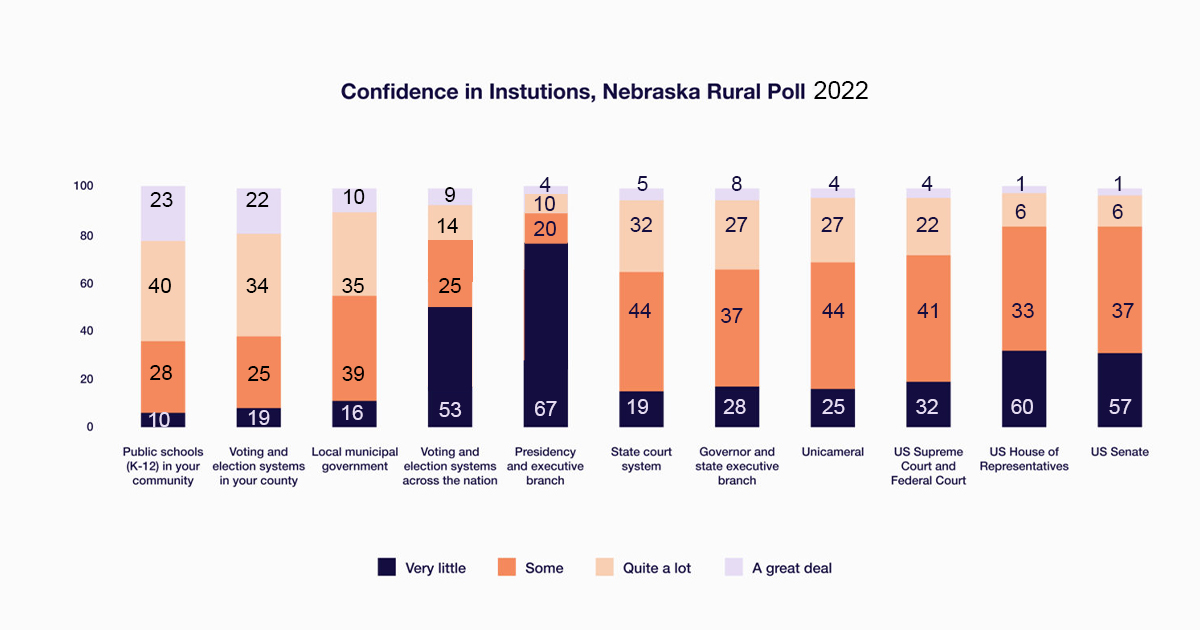Confidence in Institutions
A person’s willingness to engage with an institution is largely predicated on their confidence that that institution is fair, responsive, and effective.
Examples of institutions in Nebraska include the state legislature (unicameral), public schools, hospitals, media, and businesses. High confidence in institutions reflects the perception that an institution can be trusted to do the right thing, have the public’s best interests in mind, and fulfill its function effectively. As the data will show, confidence varies widely by institution, as well as across different groups, such as race and ethnicity.
Confidence in Institutions refers to the degree to which residents believe that various institutions, including public schools, government, and media, will do what is right.
Data Overview
While no data was collected on confidence in institutions from the most recent Current Population Survey, national data from the Gallup confidence in institutions survey from June 2020 and the Nebraska Rural Poll 2017 is included in this index to provide context and spur discussion.
Highlights from Gallup Confidence in Institutions survey:
- In the US, small businesses, the military, and the medical system were recorded as having the highest confidence among 15 institutions tracked in this survey.
- Large jumps in confidence in both the medical system and public schools from 2015 to 2020 is likely linked to its response in 2020 to the coronavirus pandemic.
- Significant differences exist among white and black respondents in nationwide confidence in the police as an institution
- At the bottom of the list in public confidence is “big business”, “television news”, and congress, each with less than 20% of respondents nationwide answering that they have “a great deal” or “quite a lot” of confidence in those institutions.
A noteworthy example of difference in confidence in institutions by race can be found in the drastically different level of national confidence in the police among white and black survey respondents. 56% of white respondents reported a great deal or quite a lot of confidence versus 19% of black respondents. This gap widened sharply in 2020, when high profile killings of black citizens at the hands of police officers sparked protests and conflict nationwide, including across Nebraska.
2022 Rural Poll Findings
Nebraska-specific findings in confidence in institutions can be gleaned by drawing on the 2022 Nebraska Rural Poll results, though it should be noted this data excludes households in the Omaha and Lincoln metro areas. Among the 12 institutions included in the survey, public safety, public schools, and local voting and election systems ranked the highest. Over 6 in 10 respondents have “quite a lot” or “a great deal” of confidence in these institutions.
One significant pattern is respondents’ levels of trust increases as institutions converge from national to local. Voting and election systems in respondents’ counties fared several points better than voting and election systems across the nation, and Nebraska’s courts and legislature ranked higher in confidence than the US Supreme Court and Congress.
2022 Rural Poll Confidence in News Sources
Among rural Nebraska respondents, local news sources had more public trust than national media outlets, with a wide majority of respondents reporting either some or a lot of trust in local news sources.
Family, friends, and acquaintances also held a position of high trust as sources of information, followed by PBS, state newspapers, and public radio. Respondents showed the most distrust for internet-based platforms with a wide majority of of respondents having ‘not too much’ or ‘no trust’ in social networking sites and internet news blogs.




